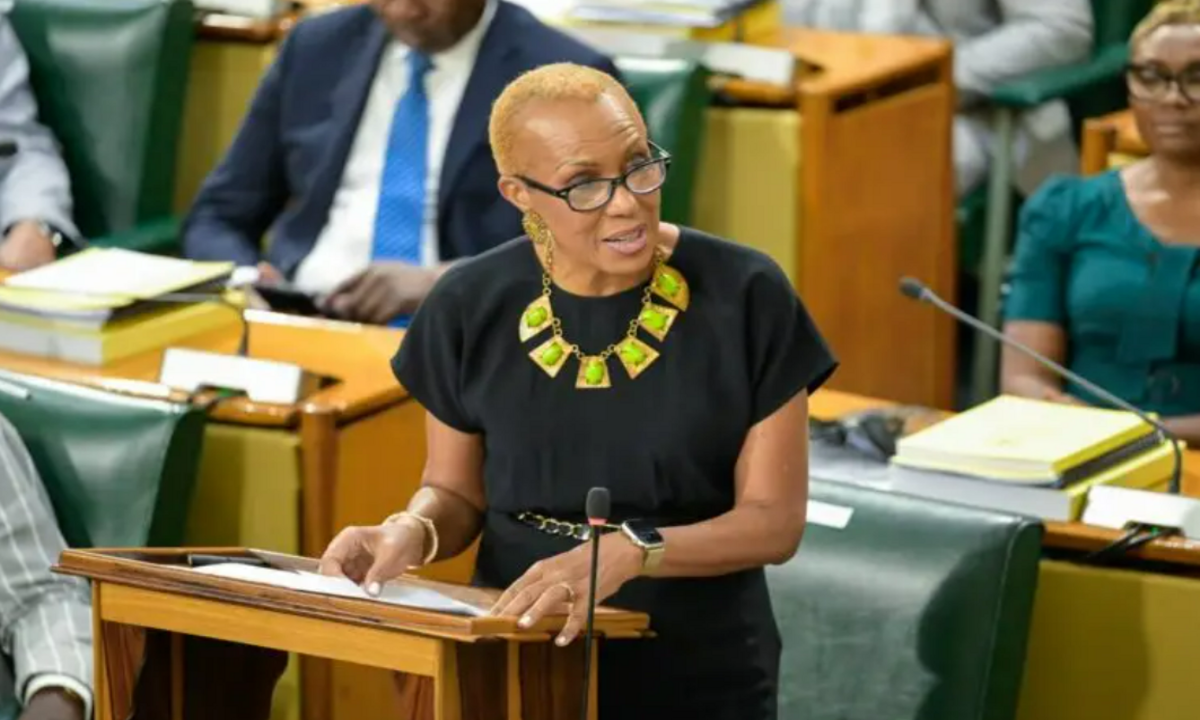Finance Minister Fayval Williams has strongly defended the government’s proposed $ 1.26 trillion budget for the 2025/26 fiscal year, addressing concerns that certain sectors may face real-term cuts despite the increase in overall spending.
She emphasized that responsible financial management and reduced debt obligations have enabled the government to maintain, and in some cases, enhance funding for critical sectors.
Budget Overview
The 9.1% increase in the national budget highlights the government’s commitment to fiscal discipline and economic growth. Minister Williams explained that savings from debt reduction have allowed for a more strategic allocation of resources, ensuring that essential services continue to receive the necessary funding.
She noted, “Our budgeting process prioritizes efficiency and sustainability. While inflationary pressures exist, we have adjusted our financial strategy to ensure that key areas remain adequately funded.”
Addressing Concerns of Real-Term Cuts
Critics argue that despite the nominal increase in the budget, inflation and rising costs may lead to real-term reductions in funding for important public sectors.
Opposition leaders and economic analysts have warned that funding increases may not be enough to keep pace with growing demands in healthcare, education, and social programs.
Williams countered these claims, stating that the government has accounted for inflation and shifting economic conditions in its budget projections. “We are ensuring that spending power remains intact by adjusting allocations accordingly,” she said.
Debt Reduction and Fiscal Responsibility
One of the key reasons the government has flexibility in its budget this year is the significant reduction in national debt. Williams explained that lower debt-servicing costs have freed up resources for priority spending.
“Our disciplined approach to debt management has allowed us to reinvest in areas that directly impact citizens, such as infrastructure, healthcare, and education,” she stated.
The government aims to keep borrowing under control while ensuring funds are directed to initiatives that boost long-term economic stability.
Sectoral Allocations and Priorities
Williams outlined how the $1.26-trillion budget will be distributed across key areas:
Education: Increased investment in school infrastructure, teacher salaries, and digital learning tools to enhance the quality of education.
Healthcare: Additional funding to modernize hospitals, improve healthcare access in rural areas, and strengthen public health programs.
Public Safety: Resources allocated for law enforcement improvements, community safety initiatives, and emergency response preparedness.
Infrastructure: Investment in road expansion projects, public transport systems, and renewable energy initiatives to support economic growth.
Public Reaction and Concerns
The proposed budget has sparked debates among policymakers, economists, and the public:
Supporters believe it reflects sound financial management, focusing on long-term sustainability and strategic investments.
Critics argue that funding should be further increased in sectors such as social services and welfare programs, especially given economic uncertainty and inflation concerns.
Business leaders see potential in the budget’s focus on economic growth and investment-friendly policies, which they believe will drive job creation.
What’s Next?
The budget is now set to be debated in parliament, where opposition parties and policymakers will scrutinize specific allocations. Amendments may be proposed before the final approval process.
Minister Williams reassured the public that the government remains committed to transparency, and public consultations will be held to engage citizens on spending priorities.
While criticism of real-term cuts persists, Williams maintains that the $1.26-trillion budget is designed to balance fiscal responsibility with national development. The government’s focus on debt reduction, economic growth, and social investment suggests a long-term vision for financial stability.
As discussions continue, all eyes will be on how the government implements its financial policies, ensuring that citizens see tangible benefits from the allocations made in the 2025/26 budget.
Disclaimer—Our team has checked this article to ensure its accuracy and eliminate any misinformation. We are committed to providing clear and reliable information for our readers.


